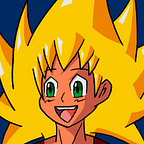Super Smash Bros. Melee, a 2001 crossover fighting game for the Nintendo GameCube
Known in Japan as “Super Smash Bros. DX” (大乱闘スマッシュブラザーズDX)
You remember when my younger brother first got the GameCube that contained Smash Bros. Melee with it, and my older half-brother played it with me… and guess what… FOUR REMOTES! Today we are talking about this awesome GameCube game: SUPER SMASH BROS. MELEE! It’s a crossover fighting game developed by HAL Laboratory and published by Nintendo. The stages and gameplay modes reference or take designs from these franchises as well.
Melee was first released in Japan on November 21, 2001, in the Americas on December 3, 2001 (though I still have the Dreamcast at the time when the GameCube was out), and in Europe and Australia on May 24/31, 2002. It achieved strong sales upon its release, becoming the GameCube’s best-selling title, with over 7,000,000 copies sold by 2008. Considered one of the most competitively viable Smash Bros. games due to its fast-paced and aggressive gameplay, Melee has been featured in many competitive gaming tournaments, boasting a dedicated grassroots fan community that has kept its competitive scene alive well beyond the game’s original lifespan.
Playable Characters
Super Smash Bros. Melee features 25 (26 if Zelda and Sheik are considered separate) characters, 13 (14 with Zelda and Sheik separate) more than its predecessor. Fourteen are available initially, while the other 11 characters require completing specific tasks to become available. Every character featured in the game is derived from a popular Nintendo franchise. All characters have a symbol that appears behind their damage meter which represents their series, such as a Triforce symbol behind Link’s damage meter and a Poké Ball behind a Pokémon species. Some characters represent popular franchises, while others were less known at the time of the release; Marth and Roy represent the Fire Emblem series, which was not released outside Japan at the time. The characters’ appearance in Super Smash Bros. Melee led to a rise in the popularity of the series, including releasing it outside of Japan. References are made throughout the game to the relationship between characters of the same universe; in one of the events from “Event mode”, Mario must defeat his enemy Bowser to rescue Princess Peach. Furthermore, each character has recognizable moves from their original series, such as Samus’s firearms from the Metroid series and Link’s arsenal of weapons.
The newcomers include:
- Ice Climbers (“Ice Climber” in Japan), Popo and Nana (Ice Climber)
- Mewtwo and Pichu (Pokémon video game franchise, including the anime)
- Peach (Super Mario franchise)
- Falco Lombardi (Star Fox franchise)
- King Bowser (“King Koopa” in Japan; Super Mario franchise)
- Marth and Roy (Fire Emblem series, as the series was lesser known outside of Japan at the time)
- Ganondorf, Sheik (alter ego of Zelda), and Young Link (The Legend of Zelda franchise)
- Dr. Mario (Super Mario franchise)
- Mr. Game and Watch (Game and Watch)
Multiplayer mode and Trophies
In the multiplayer mode, up to four players or computer-controlled characters may fight in a free-for-all or on separate teams. The central processing unit (CPU) characters’ artificial intelligence (AI) difficulty is ranked from one to nine in ascending order of difficulty. Individual players can also be handicapped; the higher the handicap, the stronger the player. Victory is determined in five ways, depending on the game type. The two most common multiplayer modes are “Time mode”, where the player or team with the most KOs and least falls wins after a predetermined amount of time, and “Stock mode”, a battle in which the last player or team with lives remaining wins. This can be changed to less conventional modes like “Coin mode”, which rewards the richest player as the victor. Players must collect coins created by hitting enemies and try not to lose them by falling off the stage; harder hits release higher quantities of coins. Other options are available, updating from Super Smash Bros., such as determining the number and type of items that appear during the battle.
Trophies (known as “Figures” in the Japanese version) of various Nintendo characters and objects can be collected throughout the game. These trophies include figures of playable characters, accessories, and items associated with them as well as series and characters not otherwise playable in the game. The trophies range from the well-known to the obscure, and even characters or elements are only released in Japan. Super Smash Bros. had a similar system of plush dolls; however, it only included the 12 playable characters. One trophy is exclusive to the Japanese version of the game.
The introduction of Marth and Roy in Melee’s roster has led to increased awareness of the Fire Emblem series outside of Japan. The game, simply called Fire Emblem in Western markets, is a prequel to Fire Emblem: The Binding Blade, the game from which Roy originates. All future Fire Emblem titles to date, barring Fire Emblem: New Mystery of the Emblem, have been released overseas.
